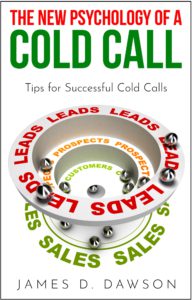Your DMs don’t need to be awkward. Here’s how to make the first move—without getting ignored.
Whether you’re a seasoned freight broker agent or a growing intermodal agent, one of your most powerful—and most overlooked—sales tools isn’t a new app or fancy CRM. It’s already in your pocket: your social media direct messages.
But let’s be honest. Most freight-related DMs fall flat. They’re either too pushy—jumping into a hard sell before any rapport—or too vague, like “Hey, thought we could connect,” with zero context. That kind of message? It’s a one-way ticket to the archive folder.
What works instead is messaging with intention. A DM that lands in the sweet spot: specific, relevant, and low-pressure. Something that doesn’t scream “I’m selling!” but whispers “I might be useful.”
Because here’s the thing: your next big shipper isn’t waiting for a cold call. They’re scrolling, reading, and noticing who shows up in their feed. And when your name pops up with a thoughtful message that speaks their language? That’s when the door opens.
Let’s break down how to do it right—so your next DM gets replies, not rejections.
Crafting Freight-Relevant Intros That Don’t Feel Random
Shippers get DMs all the time. The ones that stand out do one thing well: they’re relevant.
It’s not enough to say “Hey, let’s connect.” If you want to rise above the noise, you need to make it personal and purposeful. That means doing a little homework. Did they post about a recent supply chain snag? Are they active in a freight-focused Facebook group? Did they share an article on port congestion or rising rates?
Start there. Reference something specific to show you’re not just spamming your pitch. Then, offer something useful—whether it’s an insight, a question, or a shared experience.
Here’s how a drayage agent might approach it:
“Saw your comment about port delays—I’m a drayage agent working Southeast terminals and just helped a client cut wait times by 25%. Thought it might be worth connecting.”
Boom. That’s not a pitch—it’s a conversation starter. You’re showing relevance, credibility, and a helpful attitude in a single line.
Want bonus points? Follow, like a few recent posts, and comment before you send the DM. That warm-up makes your name familiar—and your message more welcome.
Remember: in freight, relationships drive results. And relevance is how relationships begin.
Warm-Up Before You Reach Out
Think of DMs like dating—don’t go in cold. You wouldn’t walk up to a stranger and immediately propose dinner, right? The same rule applies in freight.
Freight broker agents who consistently get responses know that social media isn’t a sprint—it’s a series of smart touchpoints. Before you hit “Send” on that direct message, take a few steps to warm up your prospect. This builds recognition, lowers resistance, and positions you as someone worth talking to—not just another name in their inbox.
Here’s your simple pre-DM playbook:
✅ Like a few of their recent posts – This shows you’re paying attention and helps your name register in their notifications.
✅ Leave a short, freight-relevant comment – Something like: “Interesting take on LTL rates—we’re seeing similar shifts in the Southeast” adds value without selling.
✅ Share a useful post or industry article – If it’s relevant to their region, industry, or mode, shoot it over with a quick note: “Thought this might be helpful given what you posted about earlier.”
Now your name’s familiar. You’re not a stranger—you’re that freight pro who shared something smart last week. So when your DM finally lands, it feels like a natural extension of a conversation—not a cold pitch.
This simple sequence turns passive scrolling into proactive prospecting. And that’s where the real connection (and conversion) begins.
Message Framework: Keep It Short, Freight-Specific
If you’re a truck freight broker or freight agent broker, your DMs need to cut through the noise—fast. Shippers are busy. Their inboxes are cluttered. So your message needs to be short, freight-specific, and—most importantly—respectful of their time.
Here’s a simple 3-step structure that consistently gets replies:
Step 1: Friendly Context
“Hey [Name], I work with shippers handling LTL out of the Midwest—noticed you’re managing ops at [Company].”
This isn’t a generic opener. It’s personalized and shows you’ve done your homework. Mention a region, mode, or challenge that’s relevant to their role. This small touch instantly makes the message feel more human.
Step 2: Freight Value
“We just helped a similar business reduce lane bottlenecks—thought it might be worth a quick intro.”
Now you’re signaling value, not pitching. You’re sharing insight that’s directly tied to what they might be dealing with. That relevance makes them more likely to lean in and keep reading.
Step 3: Casual Ask
“Open to swapping notes sometime this week?”
Notice what you didn’t say: “Let’s schedule a meeting.” This isn’t a sales pitch—it’s a conversation. “Swapping notes” is low-pressure, collaborative, and curiosity-driven. It opens the door without demanding a commitment.
Put it all together and you’ve got a freight DM that feels natural, not needy.
And when you message like this consistently? You stop chasing conversations—and start creating them.
How to Transition to a Call Without Sounding Salesy
Let’s be real—nobody logs onto LinkedIn or Facebook hoping for a cold pitch in their inbox. Shippers and logistics managers can smell a hard sell from a mile away. So if your CTA is “Let’s schedule a call,” chances are they’re hitting delete before finishing your message.
But that doesn’t mean you shouldn’t ask for a conversation. It just means you should frame it better.
The best freight broker agents and freight agent brokers know how to shift the tone from salesy to helpful. Instead of a straight ask, offer value first and make the call optional—not obligatory. Here’s how:
✅ Better CTA Examples:
-
“Happy to share what’s working on our end if that’s helpful.”
This shows you’re willing to give before you ask. You’re offering insight, not pushing a pitch. -
“Might be worth a quick chat to compare notes—no pressure at all.”
The phrase “compare notes” makes it collaborative. “No pressure” lowers the guard and makes it feel like a peer conversation. -
“Open to a quick convo next week if you’re looking for a backup option?”
This one’s great for shippers who already have carriers. You’re not asking them to switch—you’re offering a safety net. That’s strategic.
These CTAs feel more like an industry peer checking in—not a sales rep chasing a quota.
And that tone? It’s what gets replies, builds rapport, and opens the door to real conversations—the kind that convert into long-term business.
Bottom Line: Your DM Strategy = Modern Freight Networking
As a freight agent, you don’t need to chase leads blindly. You need to show up consistently, connect intentionally, and message with purpose.


Recent Comments